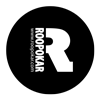
At any other time, the open-space office would have been bustling with activity and the company’s 70-some employees would have given the newbies a hearty welcome. But with employees urged to work at home as a result of the coronavirus pandemic, only a skeleton staff was on hand to greet their newest co-workers, says Eugenie Fanning, the company’s vice president of people.
After completing some routine paperwork, the workers were handed laptops and sent home to learn the ropes of their new jobs and meet their co-workers online via videoconferencing. Gartner analysis shows that 16% of employers are using technologies more frequently to monitor their employees through methods such as virtual clocking in and out, tracking work computer usage, and monitoring employee emails or internal communications/chat. Some companies track productivity, others monitor employee engagement and well-being to better understand employee experience. Even before the pandemic, organizations were increasingly using nontraditional employee monitoring tools, but that HR trend will be accelerated by new monitoring of remote workers and the collection of employee health and safety data.
Make sure to follow best practices to ensure responsible use of employee information and analytics. The current economic crisis has also pushed the bounds of how employers view the employee experience. Personal factors rather than external factors take precedence over what matters for organizations and employees alike. Employing such measures can be an effective way to promote physical health and improve the emotional well-being of employees.
2020 was fraught with change, as organizations around the world scrambled to react to the global COVID-19 pandemic that affected companies large and small across every industry. If 2020 taught us anything, it’s that companies that don’t transform will get left behind by those that do. This applies to developing a digital transformation strategy that will stick but, more importantly, extends beyond technology to tackle people-centric issues. After the global financial crisis, global M&A activity accelerated, and many companies were nationalized to avoid failure. As the pandemic subsides, there will be a similar acceleration of M&A and nationalization of companies. Companies will focus on expanding their geographic diversification and investment in secondary markets to mitigate and manage risk in times of disruption. This rise in complexity of size and organizational management will create challenges for leaders as operating models evolve.
A top strategic focus of HR over the next few years, Millner believes, is a focus on data. The shift to remote work caused by the pandemic, he explained, meant employers had to increasingly rely on tools to gauge how engaged and productive employees were, and, by extension, turn to data insights for direction.
“Data is the new currency when it comes to the workforce,” Millner said, “and as long as HR retains that human touch, the advent of data should not scare any HR practitioner.”
Why, exactly, is data taking center stage?
It provides understanding of three pivotal areas. First, it shows how successful HR practices are in adding value at the strategic or business level. Second, data allows HR to identify ways to enhance practices and the employee experience. Third, it enables HR to show how its various functions align with related strategies and commercial demands.
In terms of the impact at a tangible level, data is critical, according to a recent Mercer report. It found that more than 60% of executives say the top HR trend offering impact is using talent analytics to make decisions rooted in data. To make our Hr & payroll software in Bangladesh as a unique one. We have integrated some modules which makes it the best Hr & payroll software in Bangladesh.






